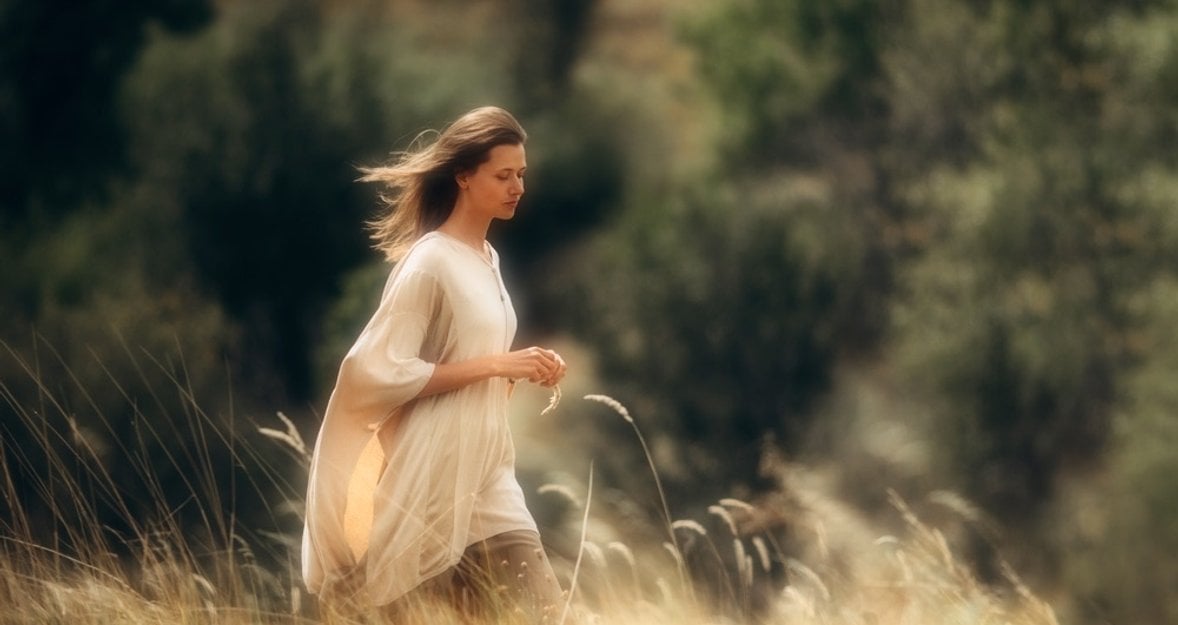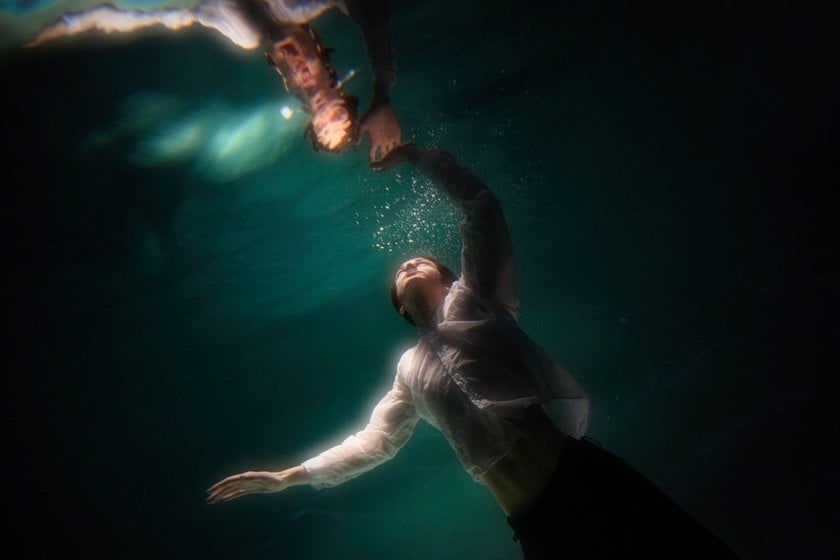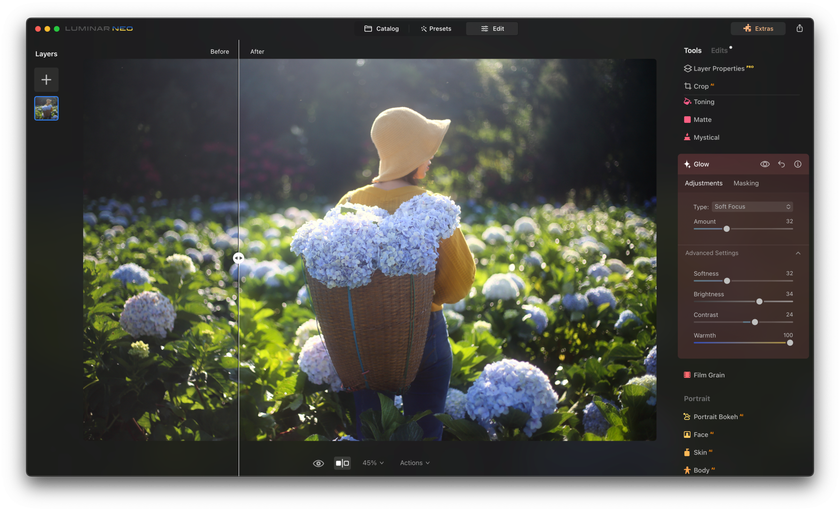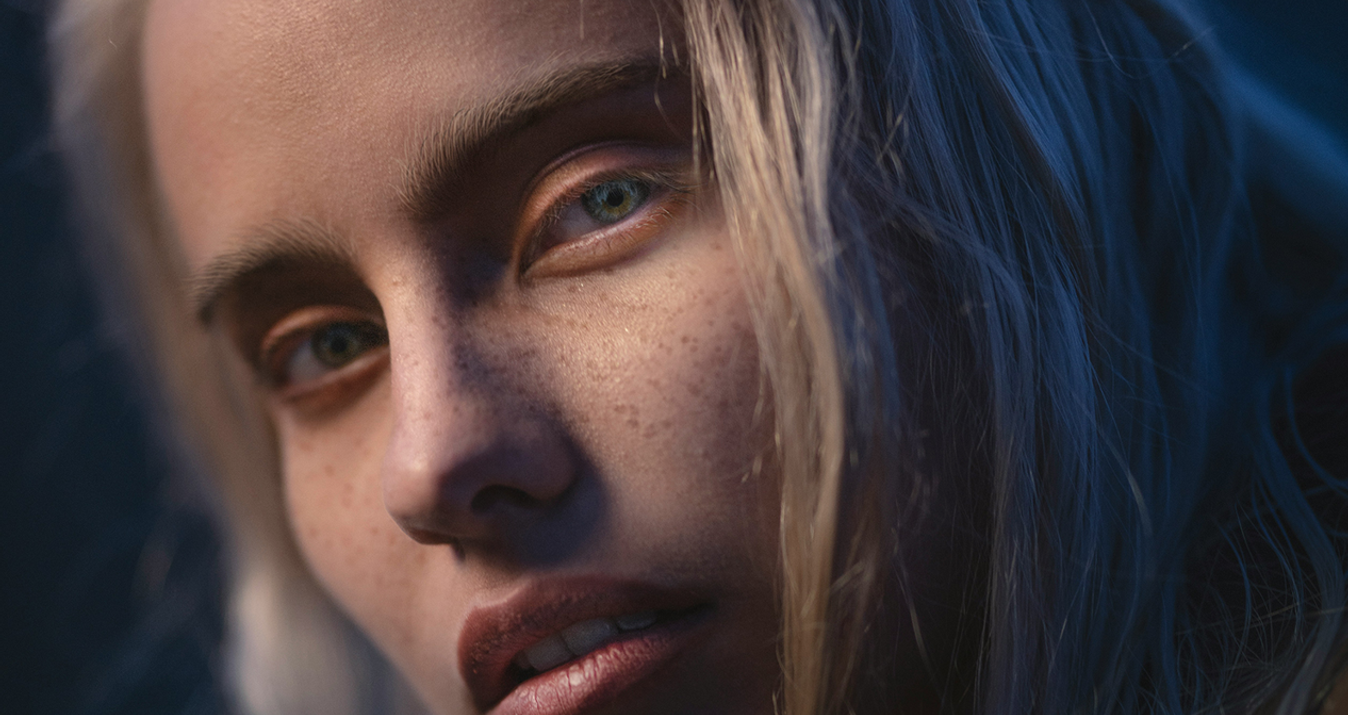How to Achieve Soft Focus Photography
Last Updated on January 24, 2025

Immerse yourself in the ethereal world of soft focus photography, where every image whispers a tale of dreamy elegance.
Enter a world where reality mingles with fantasy through the soft-focused shot. This technique evokes a dreamlike vision. A halo and delicate blur wrap around the subjects. Such photography captures an air of mystery ideal for ethereal portraits or mystical landscapes. Soft lens photography can help create that magic, spellbinding effect. Take your photos to poetic masterpieces and lift them into another dimension with the ever-charming soft focus.
Find out more: How To Take Dreamy Photos: A Full Guide
What Is Soft Focus In Photography
 Soft focus in photography is a technique that intentionally blurs the image to create a dreamlike, ethereal effect. It succeeds by just diffusing the light entering the lens through some soft focus lenses, filters, or during post-processing. The picture that follows usually shows smoothed edges and details with glowing highlights. This may lend a quality of romance, nostalgia, or even mystery to a photograph that could effectively suit specific subjects and scenes.
Soft focus in photography is a technique that intentionally blurs the image to create a dreamlike, ethereal effect. It succeeds by just diffusing the light entering the lens through some soft focus lenses, filters, or during post-processing. The picture that follows usually shows smoothed edges and details with glowing highlights. This may lend a quality of romance, nostalgia, or even mystery to a photograph that could effectively suit specific subjects and scenes.
Soft focus can also be one of the strong points of series creation, as it establishes one leading aesthetic in several photos. Having this technique applied to several photos means that photographers get to tie a collection of photos through a unifying, dreamy quality, which will lend the series more intentionality and artistic cohesion. Besides, such focus helps draw the viewer’s attention to an image’s overall mood and atmosphere rather than its fine details, allowing the photograph's emotional impact to come to the fore.
Such focus is best used to evoke emotional responses or create specific atmospheres. Here are some ideal scenarios:
Portraits. Soft focus can smooth skin tones and create a flattering, gentle look, making it perfect for romantic or vintage-themed portrait photography.
Nature and landscape. To give a scene an ethereal or tranquil feel, use this focus to soften the edges of natural elements like flowers, trees, and bodies of water.
Macro photography. This focus would enhance their fragile beauty when capturing close-ups of delicate subjects like flowers.
Dreamlike or fantasy scenes. If you aim to create an otherworldly or surreal image, such focus helps enhance the imaginative quality.
This technique should be used judiciously to avoid overuse, which can lead to loss of detail and clarity where it is not desired.
How to Achieve a Soft Focus Effect
 Soft focus can be achieved using various techniques and materials, each in its unique way serving to lend a dreamy, ethereal quality to the photo.
Soft focus can be achieved using various techniques and materials, each in its unique way serving to lend a dreamy, ethereal quality to the photo.
1. Try Specialized Soft-Focus Lenses
Specialized soft-focus lenses create a natural, diffused look by slightly blurring the image while keeping it sharp overall. Many of these lenses offer adjustable settings with which a photographer can directly control the level of softness. They work particularly well for portrait photography because they usually soothe skin tones and blemishes without extensive post-processing. Models by Canon, Nikon, and Lensbaby are among many available.
2. Use Soft-Focus Filters
Soft-focus filters are another efficient way of making the snaps dreamy. They attach at the front of your lens and diffuse the light entering the camera. Available in various strengths, they can achieve subtle and pronounced effects. They soothe the image and provide a soft aesthetic filter for those who like switching between sharp and smooth focus during shoots.
3. Put Vaseline on the Camera Lens
The rather more DIY version is smearing a thin layer of Vaseline around the edges of a clear filter on your lens. This will diffuse the light and give a soft focus effect, although it leaves the center of a photo fairly sharp. Vaseline should be applied sparingly, only to the filter, and never directly to the lens, which can cause damage. This inexpensive method allows for creative control over the degree of softness.
4. Use the Stocking Trick
The creative approach could include stretching sheer stocking material over the lens or a filter. This allows light through the fabric while diffusing it to give a soft focus aesthetic. It is possible to adjust the tightness and thickness of the stocking to control the amount of blur. Inexpensive, this trick allows finding a unique method of capturing an out of focus effect in photography.
5. Create Soft Focus in Post-Processing

Such blurry effects can be post-processed using software like Adobe Photoshop or Luminar Neo. Techniques range from a Gaussian Blur filter to softening parts of an image while keeping other areas sharp. For instance, Luminar has included layers besides simple tools for adding depth and creativity to your photos with great control over the results. You can also add a more dreamy feel to your photos by adding the bokeh effect, where the background is beautifully blurred, making the subject pop even more.
Find out more: Orton Effect:Transform Your Photos into a Dreamlike Atmosphere
Soft Focus Examples: Get More Inspiration
As examples of soft focus photography, take a look at the work of famous photographers like David Hamilton, who specialized in dreamy and ethereal portraits. Another photographer to look at is Robert Mapplethorpe, whose delicate and soft-focused photographs of flowers are just amazing. Plus, look at the work of portrait photographers like Joyce Tenneson, whose pictures often exhibit a smooth, almost glowing quality that makes aspects of an image softer.
Cinematographers and directors who master this technique have often enriched gentle focal visual storytelling into the realms of their films. The usage of soft focus in Stanley Kubrick’s “Barry Lyndon” (1975) enhances that film with painterly qualities and a feel for historical purposes. Sofia Coppola utilized delicate focal treatment in “The Virgin Suicides” (1999) to evoke nostalgic or dreamlike environments. Besides, “Pride and Prejudice,” directed by Joe Wright in 2005, also employs a soft focus to enhance the romantic and pastoral atmosphere of the movie.
Final Thoughts
 Indeed, mastering soft-focus photography makes photos dreamy and surreal. Knowing the soft focus definition and how to soften a photo either with specialized lenses, filters, or creative DIY manners will surely help you create visually engaging and atmospheric visuals that amaze and inspire. Whether in the hands of pro photographers or within movie masterpieces, this photographic technique will not run out of artistic expression anytime soon. Let softness amaze you and make your photos tell fables of magic and eternal beauty.
Indeed, mastering soft-focus photography makes photos dreamy and surreal. Knowing the soft focus definition and how to soften a photo either with specialized lenses, filters, or creative DIY manners will surely help you create visually engaging and atmospheric visuals that amaze and inspire. Whether in the hands of pro photographers or within movie masterpieces, this photographic technique will not run out of artistic expression anytime soon. Let softness amaze you and make your photos tell fables of magic and eternal beauty.
FAQ
What camera settings work best for soft focus photography?
For soft focus photography, start by using a wide aperture (low f-stop) to achieve a shallow depth of field, which naturally blurs the background and smooths the overall image. Set your camera to aperture priority mode (A or Av) to control the aperture while the camera adjusts the shutter speed. Keep the ISO as low as possible to reduce noise, which can detract from the soft focus aesthetic. Use a lower contrast setting to maintain a gentle, diffused look.
How do I avoid overdoing the soft focus effect?
Control the amount of soft focus not to overdo it, allowing a balance between softness and clarity. Let the main subject be distinguished and not too blurred. A soft-focus filter of variable strength will help control the effect. Also, concentrate on the main elements of the composition and let the rest be subtly smoothed. Experiment with different lighting setups to achieve the desired level of softness without compromising the image’s overall quality. Review your shots during the session to adjust settings and avoid excessive blurring.
How do I make soft focus look professional?
To make such a focus look professional, use great composition and lighting. Use natural or studio lighting to enhance the soft focus, ensuring even and flattering illumination. Pay attention to the background and remove anything distracting that may clash with the the focus. Refine the effect with post-processing. Subtle adjustments can be made using software like Adobe Photoshop or Luminar Neo to enhance the soft accent without making it look artificial.









